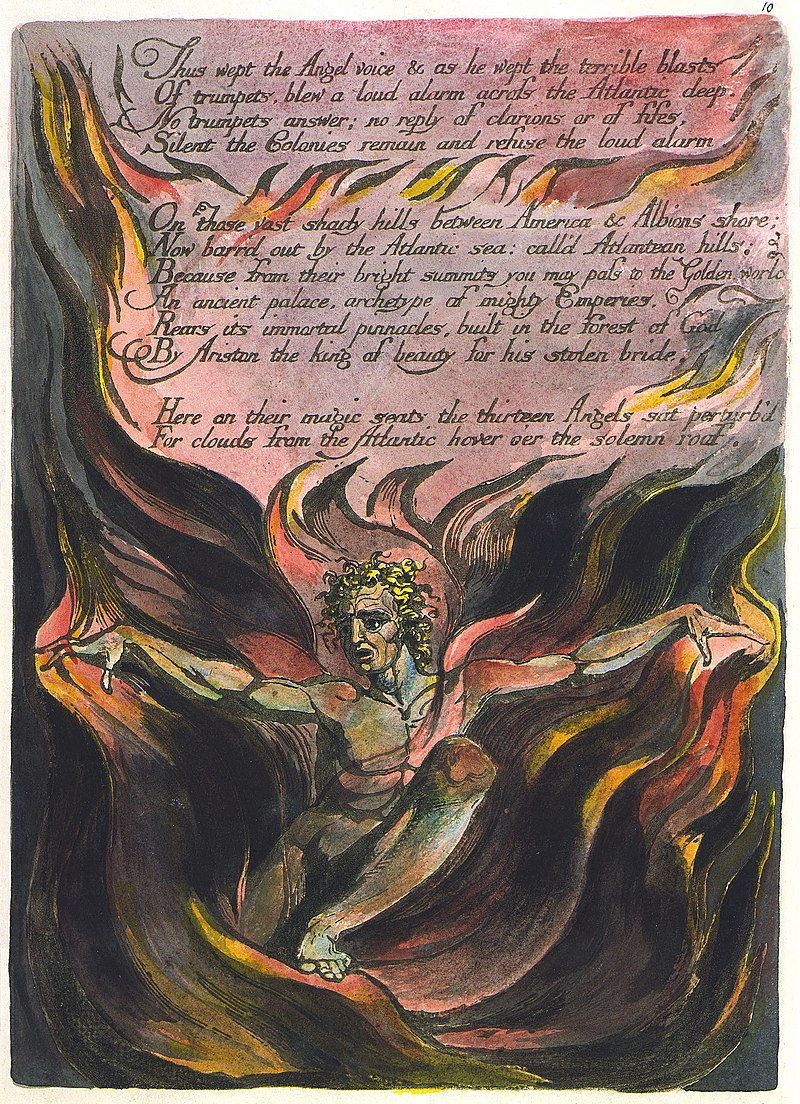Orc

- Orc is one of the characters in the mythology of William Blake. A fallen figure, Orc is the embodiment of rebellion. Orc was frequently explored as the contrary of Urizen, because the engine of progress was often powered by the dynamic struggle between ordered convention and the fire of revolution. Orc was also the serpent in the Garden of Eden, tempting Eve by recognising her repressed desire for power and knowledge. Orc is deeply anti-authoritarian. He justifies his furious destruction on the grounds that it is the only way we can overthrow what keeps us down and prevents us from reaching our true potential.
- In The Four Zoas (1797–1807), Orc was bound by his parents on top of a mountain with a ‘Chain of Jealousy’. His limbs, the rock, the chain and the vegetation all knotted together, permanently trapping him physically, but leaving his fiery imagination free to spread throughout the world. The binding of an energy was, for Blake, always a tragedy, but he recognised and understood the necessity of suppressing Orc’s revolutionary fire. He also knew that an energy like Orc would always burn itself out in time.
- Blake’s examination of Orc in his writing was an attempt to discover where the desire for revolt came from. Orc was the child of Los, who represents the imagination, and Enitharmon, who represents spiritual beauty. In theory, Orc should be the creation of something new and wonderful. But Orc, having been bound by those ‘chains of Jealousy’, was repressed or in shadow. As a result, he is the process by which love turns to war. In one account, the children of Los and Enitharmon are said to be characters representing wrath, pity, frustrated desire and logic. These, Blake suggests, are the constituent elements of Orc, the fiery spirit of revolution.
References
-
Higgs, John. (2021). William Blake vs The World Chapter 5 THE TYGERS OF WRATH (94). New York, NY: Penguin Random House.
Metadata
Type: Tags: Status:⛅️